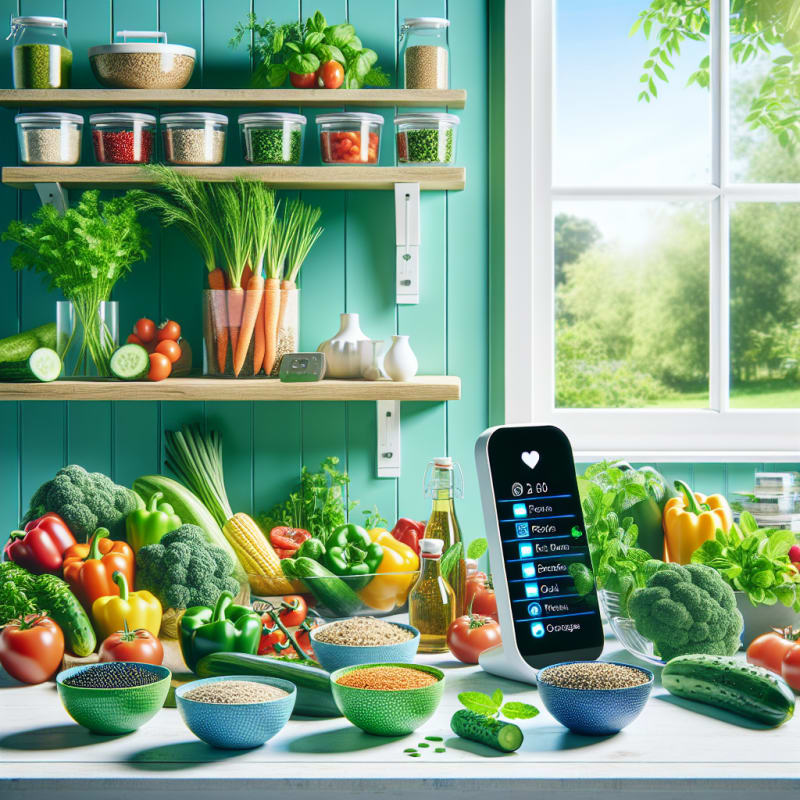The #1 Dinner for Gut Health, According to Dietitians
Choosing the right dinner can transform your digestive health, energy, and overall wellness. According to a recent EatingWell feature, dietitians agree that a simple, plant-forward meal—like a grain bowl packed with fiber, prebiotics, and fermented foods—is the #1 dinner for gut health. But what does this mean for your plate, and how do you make smart, safe choices in today’s changing food landscape?
Why Gut Health Matters—and How Dinner Plays a Role
Your gut microbiome influences digestion, immunity, and even mood. A balanced dinner rich in fiber, resistant starch, and probiotics nourishes beneficial bacteria, supporting everything from regularity to reduced inflammation. Key gut-friendly dinner components include:
- Whole grains (brown rice, quinoa, barley)
- Legumes (lentils, chickpeas, black beans)
- Fermented foods (kimchi, sauerkraut, yogurt)
- Colorful vegetables (broccoli, carrots, spinach)
- Healthy fats (olive oil, avocado, nuts)
The #1 Gut-Healthy Dinner: Dietitian-Approved Grain Bowl
| Ingredient | Gut Health Benefit | Labeling Notes (US vs EU) |
|---|---|---|
| Quinoa | High fiber, prebiotic effect | US: Must list allergens; EU: Must highlight gluten presence |
| Lentils | Resistant starch, protein | US/EU: Both require legume source labeling |
| Kimchi | Live probiotics, vitamins | US: No probiotic count required; EU: Must disclose live cultures |
| Spinach | Polyphenols, fiber | US/EU: Both require pesticide residue limits |
| Olive Oil | Anti-inflammatory fats | US: Country of origin optional; EU: Mandatory |
How to Build Your Gut-Healthy Grain Bowl
- Start with a base of whole grains (quinoa, brown rice)
- Add a scoop of legumes (lentils, chickpeas)
- Layer with fermented veggies (kimchi, sauerkraut)
- Top with leafy greens and colorful vegetables
- Drizzle with extra virgin olive oil and sprinkle seeds/nuts
This dinner is naturally high in fiber, plant protein, and probiotics—exactly what dietitians recommend for optimal gut health (PubMed, FDA, EFSA).
Food Safety Alerts & Ingredient News: What You Need to Know
Staying informed about food recalls, new regulations, and emerging trends is crucial for anyone with food sensitivities or ethical concerns. Recent FDA recalls have included salad greens and packaged grains due to contamination risks. Meanwhile, the EU has tightened additive rules for processed foods, impacting ingredient lists and allergen disclosures.
- New US labeling laws require clearer allergen statements (e.g., sesame must be listed).
- EU bans certain artificial colors and preservatives—check labels if shopping internationally.
- Plant-based trend: Major brands are reformulating products to be vegan and gut-friendly (Food Dive).
For those with sensitivities, these updates mean safer choices but also more complex ingredient lists. Always scan for hidden allergens and new additives.
How Food Scan Genius Simplifies Smart Food Choices
Food Scan Genius empowers you to shop and eat with confidence. Simply scan any packaged food to instantly reveal:
- Allergen risks (e.g., gluten, sesame, dairy)
- Ingredient details and country-specific labeling
- Food safety alerts and recalls
- Suitability for dietary preferences (vegan, keto, FODMAP-friendly)
User testimonial: “I have IBS and food allergies. Food Scan Genius helped me avoid hidden triggers and discover gut-friendly products—now I scan everything before buying!” Try Food Scan Genius and make every meal smarter.
Global Ingredient Insights: US vs EU Labeling Laws
| Aspect | United States (FDA) | European Union (EFSA/EU) |
|---|---|---|
| Allergen Disclosure | Top 9 allergens must be listed; new sesame law | 14 allergens must be highlighted; stricter formatting |
| Ingredient Labeling | Country of origin optional | Country of origin mandatory for many foods |
| Probiotic Claims | Not regulated | Must specify live cultures and quantity |
| Food Additives | Some artificial colors allowed | Many artificial colors banned |
FAQ: Gut-Healthy Dinners & Ingredient Safety
What is the best dinner for gut health?
Dietitians recommend a grain bowl with whole grains, legumes, fermented foods, and colorful vegetables as the #1 dinner for gut health. This combination supports beneficial gut bacteria and digestive balance.
How do I check for allergens and food safety alerts?
Use apps like Food Scan Genius to scan product barcodes for allergen risks, ingredient details, and real-time food safety alerts. Always review labels, especially when shopping internationally.
Are labeling laws different in the US and EU?
Yes. The US requires disclosure of 9 major allergens, while the EU lists 14 and enforces stricter formatting and country-of-origin rules. Probiotic and additive labeling also differ significantly.
What food trends are shaping gut health in 2024?
Plant-based and fermented foods are rising in popularity, with brands reformulating products for better gut health and allergen safety. Regulatory changes are making labels clearer for sensitive consumers.
Conclusion: Smart Ingredient Choices for Gut Health
Whether you’re managing sensitivities, following a plant-based diet, or simply seeking better digestion, the #1 dinner for gut health is a grain bowl loaded with fiber, prebiotics, and probiotics. Staying informed about food safety, ingredient labeling, and global trends is easier than ever with tools like Food Scan Genius. Empower your plate—scan smart, eat safe, and support your gut every night.





